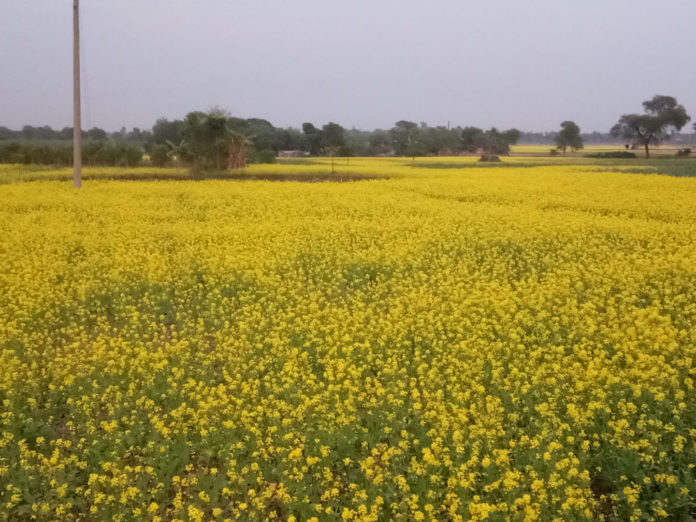RAJSHAHI, Jan 20, 2020 (BSS) – Around three lakh tonnes of oilseeds
including mustard are expected to be produced from 2.10 lakh hectares of land
in all eight districts of Rajshahi division during the current Rabi season.
Department of Agricultural Extension (DAE) has set the production target
and adopted all possible measures to meet up the region’s demands of the cash
crops through attaining the target.
The DAE has set the target of producing 2.93 lakh tonnes of mustard from
2.05 lakh hectares of land, 5,132 tonnes of sesame from 4,722 hectares and
279 tonnes of linseed (winter), soya bean and sunflower from 246 hectares of
land.
Deb Dulal Dhali, Additional Director of DAE, said 65,000 farmers were
given high yielding variety seeds and fertilizers worth around Taka 5.19
crore for mustard farming free of cost while 7,200 farmers were given the
same agricultural inputs worth Taka 57.11 lakh for sesame farming in the
division under the government’s agricultural incentive programme.
Meanwhile, multi-sectoral initiatives and favorable climate conditions
in the region including its vast Barind tract during this Rabi season have
become boon for mustard plants to grow well, predicting bumper productions.
At present, the entire of the farming fields have turned into yellowish,
creating an eye-catching look.
The landless and marginal farmers have also brought vast tracts of the
sandy char lands under mustard cultivation this time in the Ganges basins and
the crops are growing excellent everywhere in the region.
Sabbir Hossain, 35, of Bijoynagar village under Godagari Upazila, said
he had cultivated mustard seed on two bigha of land last year and got yield
of six mounds per bigha.
He has brought three bighas of land under the cash crop farming this
season and expecting good yield.
Bachhu Mian, 45, another farmer of Amnura village, has become successful
through cultivating the cash crop for the last couple of years. This year, he
cultivated the crop on four bighas of land.
Meanwhile, Development Association for Self-reliance, Communication and
Health (DASCOH) Foundation, an NGO, under its ‘Integrated Water Resource
Management (IWRM) Project’ has been working for promoting various less-water
consuming crops like mustard.
The IWRM project is being implemented at around 1,280 drought-prone
villages in 39 Union Parishads and three municipalities of eight upazilas in
Rajshahi, Naogaon and Chapainawabganj districts since 2014, said Jahangir
Alam Khan, Coordinator of the project.
He said large scale farming of sesame can be an effective means of
mitigating the adverse impact of climate change coupled with the existing
drought condition in the vast Barind tract.
Jahangir Khan opined there is no alternative to bring diversity in
cropping system in the changed climatic conditions and urged the farmers to
extend their cooperation to sesame promotion in the dried area.
On Farm Research Division (OFRD) of BARI has been working for making the
crop farming profitable through extension of its improved variety and
improved management in the Barind area.
Senior Scientific Officer of OFRD (Barind Centre) Dr Shakhawat Hossain
said BARI has released 16 high yielding mustard seed varieties and two of
those- BARI Sharisha-14 and 15 and Tari-7 have become popular in the growers’
level of the region.
He said more than 100 farmers were given improved varieties of mustard
seeds and fertilizer for farming on around 120 bighas of land.
Dr Hossain said mustard seed is a water-saving crop and its expansion in
Barind area is very important towards lessening the gradually mounting
pressure on its underground water.



